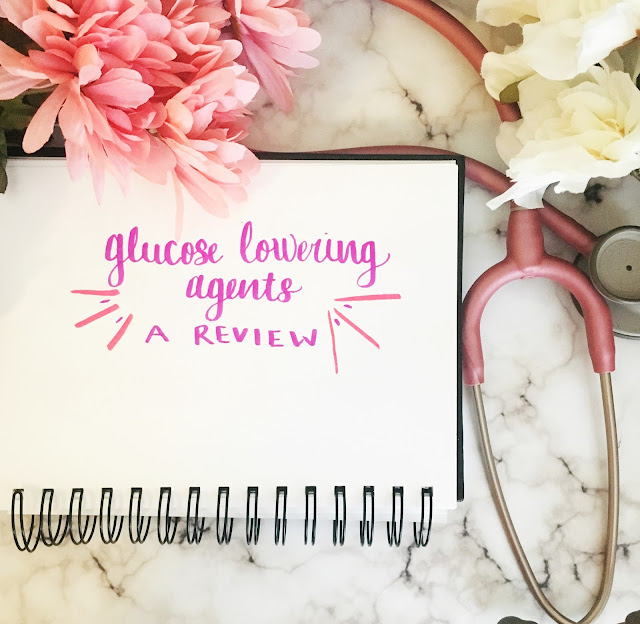Angiotensin Converting Enzyme (ACE) Inhibitors and Angiotensin II Receptor Blockers (ARBs) are two of the first line agents recommended for treatment of hypertension in guidelines such as JNC8, and ACC/AHA '17. They are also recommended first line by the ADA 2018 guidelines for patients with diabetes, hypertension and albuminuria in order to reduce the risk or slow progression of diabetic kidney disease. Additionally, we use them in chronic congestive heart failure and post-MI where there is data says they reduce cardiovascular mortality and morbidity. They're pretty much our ACE in the hole (ha ha ha) but there a few things we look out for when starting these agents in people: change in Glomerular Filtration Rate (GFR), hyperkalemia and that weird dry cough. So, what is the story behind the ACE-I effect on these factors?
The GFR Effect
The end goal of ACE-I is to prevent angiotensin II from causing potent vasoconstriction, a mechanism activated to increase blood pressure that can be overactive in certain types of hypertension and other disease states. In the kidney, angiotensin II vasoconstricts both the afferent and efferent arterioles, but preferentially affects the efferent arterioles. Why does this happen? The efferent arteriole is smaller than the afferent, making the effects of vasoconstriction on resistance more capable of occurring. Also, angiotensin II stimulates release of the vasodilator nitric oxide from the afferent arteriole, meaning that angiotensin II is able to keep the afferent a little more open versus the efferent arteriole. This preferential vasoconstriction of the efferent arteriole either increases or maintains intraglomerular pressure and is an important factor in autoregulation of pressure by the kidney.
In primary hypertension, there is an increase in renal perfusion that isn't as mediated by angiotensin II, so treating with an ACE-I doesn't cause as much of a change with GFR when the patient has normal renal function. However, this is not the case in patients with renal artery stenosis where the arteries carrying blood to the kidneys are narrowed and perfusion to the kidneys is poor .When the addition of an ACE-I reduces systemic blood pressure and inhibits the auto-regulation effects of angiotensin II, patients with renal artery stenosis experience a subsequent drop in intraglomerular pressure, and a further reduction in perfusion, causing an increase in plasma serum creatinine. This can also be observed in patients with hypovolemia where there is low circulating volume, and in intrarenal disease such as nephrosclerosis. Bilateral renal artery stenosis is considered a disease-drug contraindication with ACE-I/ARBs because of the risk of kidney damage and potential failure with poor perfusion. However, the reduction of GFR is reversible with cessation of these agents.
What to look for:
This is one of the many reasons why we order 2 week follow-up labs when starting patients on ACE-I/ARBs. This change in GFR happens within the first week of starting these agents, so labs within 1-2 weeks are the best bet to catching it. We can expect to see a transient change in GFR when starting these agents but if the change in serum creatinine is >30% of the patients baseline, that is cause to consider there may be an underlying perfusion problem such as bilateral renal artery stenosis.
References:
1. Navis G, Faber HJ, de Zeeuw D, De Jong PE. ACE Inhibitors and the Kidney: a Risk-Benefit Assessment. Drug Saf. 1996; 15(3): 200-11. https://www.ncbi.nlm.nih.gov/pubmed/8879974
2. Sica DA. Angiotensin-Converting Enzyme Inhibitors Side Effects: Physiologic and Non-Physiologic Considerations. J Clin Hypertens. 2004: 6(7); 410-16. http://onlinelibrary.wiley.com/doi/10.1111/j.1524-6175.2004.02866.x/full
3. Bauer JH, Reams GP. ACE Inhibitors in Renal Disease. Clin Cardiol. 1991:14; 38-43.
Hyperkalemia
The renin-angiotensin-aldosterone (RAAS) system is an influencer of sympathetic tone, blood pressure, and homeostasis through the regulation of sodium, potassium and fluid. The juxtaglomerular cells which are present in the wall of the afferent arteriole are meant to sense changes in this balance, and then react accordingly to any changes by releasing renin. This activates the entire RAAS cascade, ending in the creation of angiontensin II. Part of angiotensin II's action is to mobilize aldosterone from the adrenal cortex.
Aldosterone mediates potassium secretion out of the body through its effects on sodium reabsorption. It binds receptors in the collecting duct of the nephron to stimulate sodium reabsorption and therefore create a more favorable environment for potassium to be secreted through potassium channels. So it makes sense that when we use ACE-I or ARBs, we blunt this process by inhibiting angiotensin II and reducing the stimulatory its effects on aldosterone. It is unlikely that ACE-I reduction in aldosterone alone will cause hyperkalemia, because it is more likely that a greater reduction has occurred due to disease. There are many additional factors that contribute toward hyperkalemia in patients taking these agents, such as increased potassium intake, combining with other potassium-sparing drugs, reduced renal function and older age. Why do we care about increased potassium? Hyperkalemia can cause cardiac dysrhythmias, bradycardia, systole, muscle cramps, tetany, and parethesias.
References:
1. Raebel MA. Hyperkalemia Associated with Use of Angiotensin-Converting Enzyme Inhibitors and Angiotensin Receptor Blockers. Cardiovasc Ther. 2012; 30(3). 156-66.
2. Palmer BF. Managing hyperkalemia caused by inhibitors of the renin-angiotensin-aldosterone system. N Engl J Med2004;351:585–592.
Dry Cough
Probably the most recognizable/infamous side effect of these agents, is the dry cough reported in 5-35% of people who have taken ACE-I. The mechanism surrounding this side effect is mostly a mystery, but the proposed mechanism involves the RAAS system. ACE-I also prevent the breakdown of bradykinin and substance P, which are protussives and sensitize airway sensory nerves. Their accumulation in the respiratory tract is thought to be a potential mechanism of dry cough. Bradykinin is also thought to play a role in the therapeutic effects of ACE-I and a negative role in the pathogenesis of angioedema. Important to note that this side effect is not typically present in patients using ARB agents because they block the RAAS system further downstream than ACE-I, and do not inhibit ACE. In patients who experience dry cough with an ACE-I it is completely reasonable to switch them to an ARB.
References:
1. Dicpinigaitis PV. Angiotensin-Converting Enzyme Inhibitor Induced Cough: ACCP Evidence-Based Clinical Practice Guidelines. CHEST. 2006; 129(1).












































